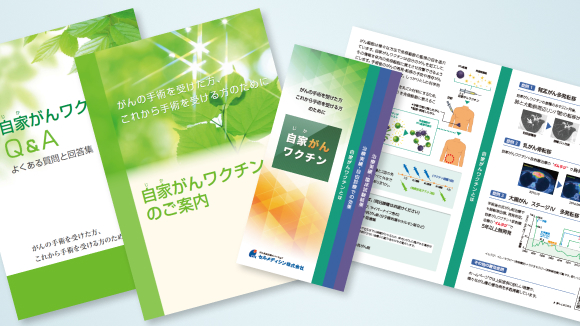Authors: F. Kuranishi , Y. Kuroda , T. Noriyuki , M. Nakahara , M. Hamamoto , T. Mizukami , M. Shimomura , J. Nanbu , R. Hotta , T. Ohno
Proc Amer Assoc Cancer Res, Volume 47, 2006
Abstract:
Introduction: A novel tumor vaccine consisting of autologous formalin-fixed tumor fragments (AFTV) has been developed. The vaccine induced tumor-specific CTL in mice and suppresses recurrence of hepatocellular carcinoma after resection in Phase IIb randomized clinical trial (Clin Cancer Res 2004; 10: 1574-9). Therapeutic effects of the vaccine were found in recurrent glioblastoma multiforme patients after surgery, radiation- and chemo-therapies (in submission). Here, we report results of further application to advanced cancer patients who have no intention to receive adjuvant chemotherapies. Methods: AFTV, prepared by admixing with autologous formalin-fixed lung cancer fragments, tuberculin microparticles, and a BCG extract, was administered intradermally to terminal-stage 11 patients bearing non-small cell lung cancer and an advanced bile duct carcinoma patient with metastases to brain and chest walls 4 weeks or more after surgery. Results: In all cases, none of grade II, III, or IV adverse effect was observed. A remarkable lung cancer case, 73-y old female, showed positive DTH response to the autologous tumor fragments accompanied with long lasting reduction of CEA level from 12.8 ng/ml to 5.9 ng/ml for 7 months without any sign of recurrence detected on CT. In the surgery of this case, no lobectomy but VATS partial resection was performed since the tumor has been exposed already to the thoracic cavity and the thoracic effusion revealed class V adenocarcinoma. In other 10 cases, though the DTH response turned positive in 8 cases, 3 SD and 7 PD were observed. CA19-9 of the bile duct carcinoma reduced to normal level (2.6 ng/ml) for 9 months. Conclusions: The class V adenocarcinoma, if proved by cytology in thoracic effusion, has long been experienced as the testimony of incurability. However, the above mentioned remarkable cases implies that, by combination of operation and AFTV, there is a feasibility to cure the hardest-to-treat lung cancer and multi-metastated bile duct cancer as well as the worst brain tumor, glioblastoma multiforme.

























